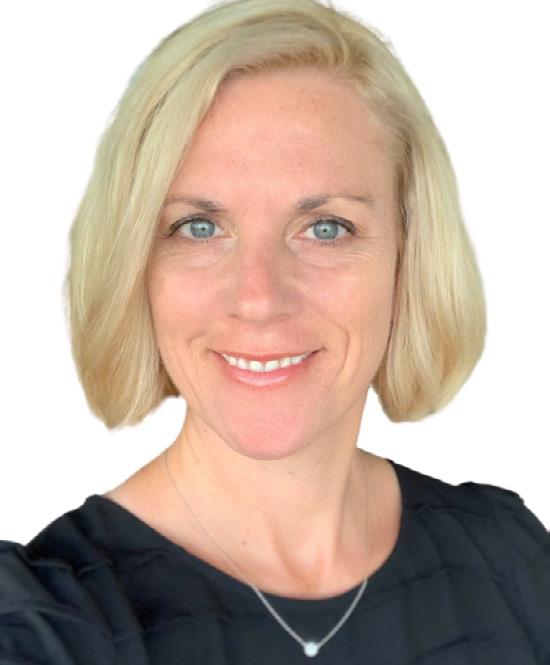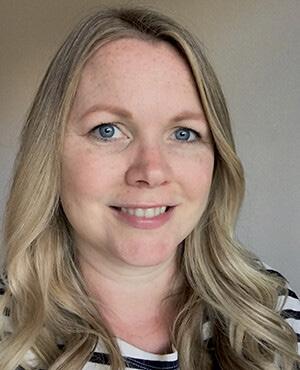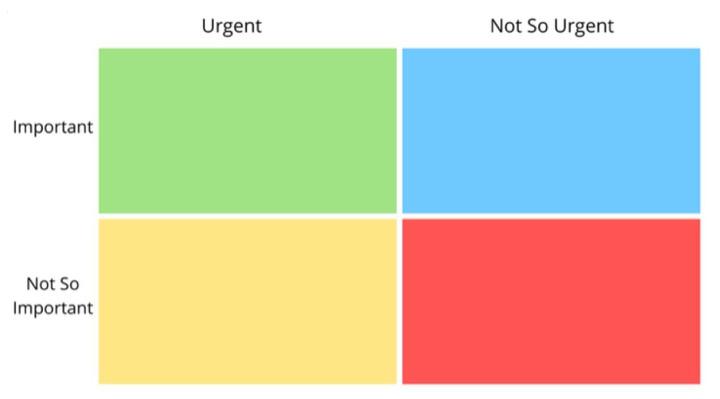
7 minute read
Trending
Tammy MusiowskyBorneman

C.Y. Arnold
Reflecting on Minimalism in Our Work: Key Ways a Minimalist Approach Can Support Our Well-Being
Forty combined years. Seven countries. Hundreds of students. This is the perspective we have gained through our experiences in education. Across this span of time, we have taught, coached, and mentored new and experienced teachers. We have learned and experienced initiatives and their associated educational jargon, seen terms resurface, and trends get new names. We have witnessed new educational research about teaching and learning become what drives the new practices we try and implement. Yet, two dangerous things have remained the same in the educational landscape: overburdened teachers and unrealistic expectations. In order for us to move forward with success and sanity in our profession, those that set the expectations in our educational landscape must consider shifting away from overburdening and overtaxing teachers with tasks and responsibilities that take them away from their purpose in education. Those that chose the teaching profession did not do so to write compliance reports or to fill in redundant checklists. They were drawn to the field to fulfill a need and a passion to make a difference in the lives of learners.
Figure 1. Urgent/Important Matrix

In searching for ways to support ourselves and our colleagues in sustainably engaging in our important profession, we have encountered and built upon the ideals of minimalism. Popular culture has taken ideas from Eastern and Scandinavian cultures and filtered them into simplified versions of what minimalism is. We have translated some of these ideals into our lives as educators. In our work that centers on the ideas of minimalism in education, we have created a number of tools designed to help educators refocus on their purpose and identify their priorities. The good news is that starting with some version of minimalism can get us on a path to clearing unnecessary tasks and items. From our conversations with educators to whom we have introduced minimalism in education, we have discovered three key ideas that educators gravitate toward: 1. They are seeking a structure to help them prioritize. 2. They are feeling the stress from a disorderly physical environment. 3. Their responsibilities exceed the time they have.
A Structure for Prioritizing
Teachers have seemingly unending to-do lists and it is difficult to feel like they have ever been sufficiently tackled. Making decisions about how to approach these lists can be challenging and leave us feeling overwhelmed. Having a structure in which to start thinking about which priorities should be tackled and when, is something that teachers have responded favorably to. One tool we have found helpful is an urgent/important matrix. In using this tool, teachers are supported in reflecting on the different tasks they
have in front of them and whether they can be classed as urgent or important in the current moment. You can participate in this process by either using the suggested categories listed below or the items on your own to-do list. After your reflection, the items that land in the urgent/important quadrant are the ones that need to be your top priority. These are the items that you should take action on immediately. The items that fall within the not-so-urgent and not-so-important quadrant, can be put aside for the moment. The remaining sections are not your immediate priority, but a planned schedule for action could be made for the future. The great thing about this matrix is that it can be revisited whenever you are again feeling overwhelmed with where to begin.
Priority list:
• Maintenance or restoration of your well-being
• Avoiding burnout • Minimizing time waste • Minimizing physical clutter and waste • Minimizing economic waste (unnecessary expenditures) • Minimizing mental waste (overthinking, trying to attend to unnecessary tasks or ideas) • Sustaining habits that minimize time, economic, and mental clutter and waste
Note: It is important to keep in mind that your perception of what is urgent and important may not match that of your colleagues or supervisors. If you are working on prioritization individually, this matrix is for you to identify the priorities for YOU to meet within your role. If you are prioritizing as a team, you will need to communicate and clarify the team’s priorities.
Mental Stress From the Physical Environment
Dr. Susan Krauss Whitbourne (2017) writes about the research of Catherine Roster and colleagues at the University of New Mexico. Roster (2016) explains how physical clutter may be correlated to negative lifestyle habits such as overeating, as well as low self-esteem. Clutter impedes one’s well-being, ability to navigate life, and ability to respond effectively to cognitive tasks. When translated into their lives in schools, educators feel consistent mental fatigue over the course of an academic year. One of those reasons may be correlated to the excessive amounts of items on boards, books on shelves, papers, consumables, furniture items in every corner of a space, and anchor charts hanging from the rafters.
Too many visual stimuli in a space can result in cognitive overload and impede working memory function. The teaching and learning environment is constantly cluttered with not only non-essential items, but also essential items. Essential items are ones that teachers and learners would use on a near-daily basis. Nonessential items are ones such as an overabundance of consumables, books, and anchor charts that can distract both students and teachers from intended and how? If no, what is it that I can do with these items so they do not become someone’s problem?
Teacher Responsibilities Exceed Available Time
Teachers lacking the time they need is not a new concern. But it does appear to be something that is becoming more and more of a tipping point for many of us in the profession. Not only are teachers given little time to do the job’s
learning. Environments that have been decluttered, or have designated spots for essentials to create an ordered visual aesthetic, can be more conducive to the brain’s effective functioning. To preserve our well-being and create an environment that prioritizes the value of learning over things, there are steps that can be taken. • Reflect upon the necessity to declutter the space. • Take inventory of all items in each area of your space. • When taking inventory, ask yourself:
What is the purpose of these items?
Are they essential for student learning? If yes, when do we use them minimum requirements, but they are also continually given more and more responsibilities to complete within the same limited time. And that’s not to mention the planning times and lunch breaks that are taken away from us at the last moment! To complicate matters more, the added responsibilities are so frequently concerned with tasks that do not directly relate to our students. This leaves teachers spending their personal time, beyond contracted hours, working on these tasks because they don’t want to let their students down. In our research with teachers, we found that while teachers could identify how important time away from work was for their well-being, they also responded
that working overtime contributed to their feeling more effective, organized, and prepared for their work with students. Teachers reported that they almost unanimously worked more than 5 hours beyond their contracts over the course of each week. So how do we combat this simultaneous need to have balance in our work life, and wanting to feel effective and prepared at school? While we wait for the anticipated overhaul of the modern education system, we propose in The Minimalist Teacher that teachers consider their purpose and their priorities. Once this has been thought through, paring down any tasks that are not serving those purposes and priorities results in eliminating some of this time waste. When teachers can spend more of their time on the tasks that are the most purposeful to their work, they are able to draw that line in the sand, creating healthy boundaries. Similarly, identifying our most urgent/important priorities and clearing physical clutter can allow educators the mental space they need to feel rested and more effective in their roles.
References
Krauss Whitbourne, Susan, Ph.D. 5
Reasons Why Clutter Disrupts Mental
Health (2017). Retrieved from:
https://www.psychologytoday. com/us/blog/fulfillment-anyage/201705/5-reasons-why-clutterdisrupts-mental-health
Musiowsky-Borneman, Tamera, & Arnold,
C.Y. (2021). The Minimalist Teacher.
ASCD.
Tammy Musiowsky-Borneman is the founder of and professional learning facilitator at Plan Z Professional Learning Services and is the Head of Teaching and Learning at Kokua Academy in Kona, Hawai’i. She is the interim Executive Director of the ASCD Emerging Leader Alumni Affiliate and has co-authored the ASCD book, The Minimalist Teacher, with C.Y. Arnold. Her experience teaching and leading in Hawai’i, Singapore, New York City, and Edmonton, Canada has expanded her perspective on and knowledge of education on a global scale.
C. Y. Arnold is an Australian educator who has worked in Australia, Japan, Singapore, Belgium, and The Netherlands as a teacher, coach, mentor, co-teacher, coordinator, tutor, and supervisor from early childhood education to adult education. Her dedication to teaching has led her to serve on the board of the Singapore chapter of SENIA, publish educational articles, and present at various international and Australian conferences.








